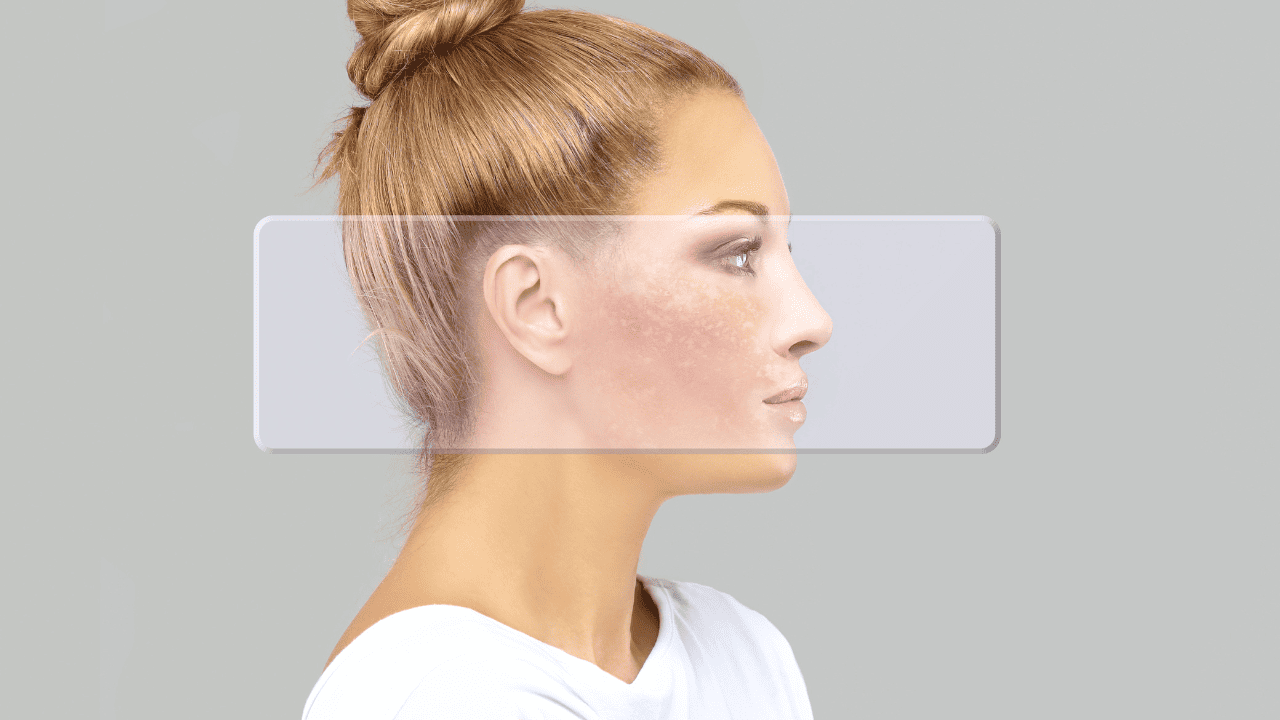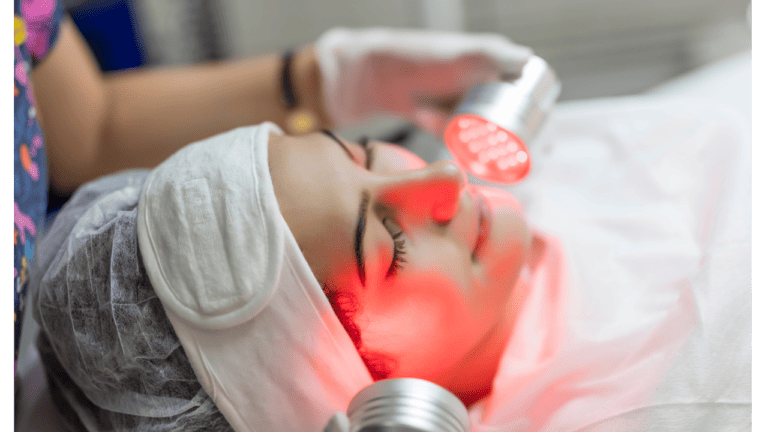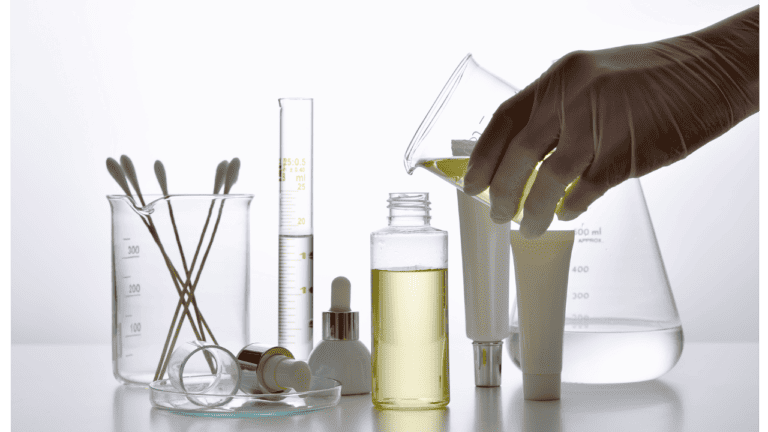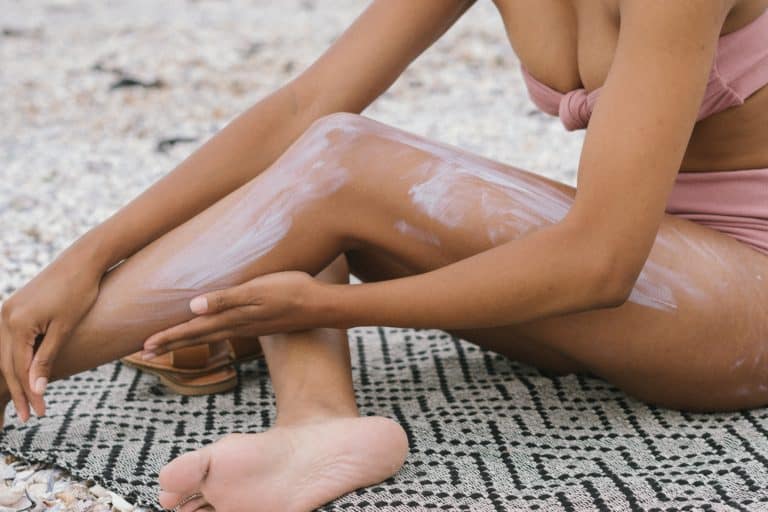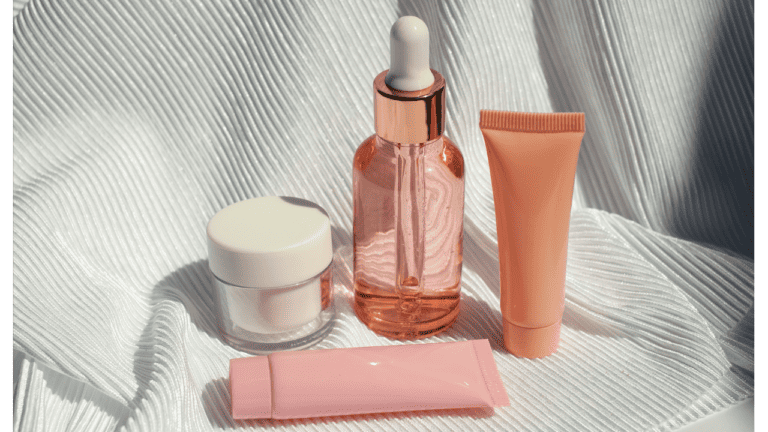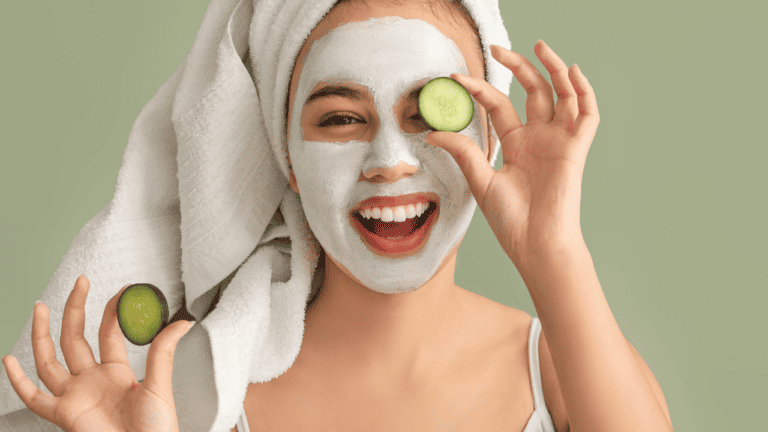Why acne scars can look worse with makeup boils down to improper application and not using the right products which will easily result in highlighting the uneven texture of the skin. Makeup can create shadows and accentuate the depth differences in scarred areas, making the scars more noticeable instead of concealing them. Additionally, mismatched texture and color between the makeup and skin can draw further attention to the scars.
Acne scars, a common skin concern, often lead us to turn to makeup for a solution. However, it’s not uncommon to find that instead of concealing these scars, makeup seems to make them more noticeable.
Whether you’re seeking to understand this phenomenon better or looking for effective ways to manage the appearance of acne scars, this guide is designed to be informative, accessible, and helpful.
Key takeaways
- Use proper makeup techniques to prevent highlighting acne scars
- Ensure your makeup is non-comedogenic to prevent future scarring
- Professional makeup techniques and understanding your unique skin needs are key to minimizing the appearance of acne scars.
How Improper Makeup Application Enhances Acne Scars

Acne scars are a common skin concern, and many turn to makeup as a cover-up solution. However, the interaction of makeup with these scars often leads to less-than-desirable results. Understanding this interaction is crucial for anyone looking to minimize the appearance of their scars.
1. Heavy Foundation or over concealing
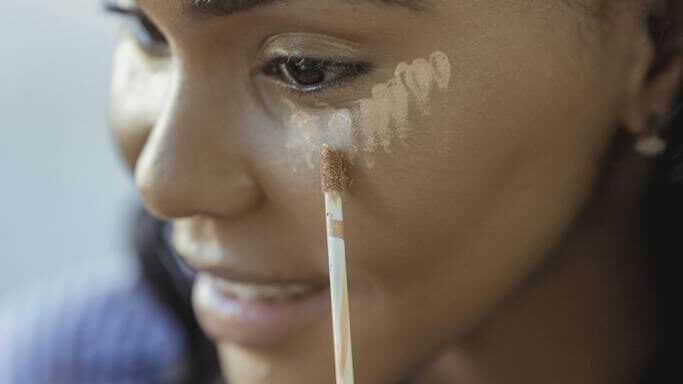
When a heavy foundation or too much concealer is applied over acne scars, it can create an uneven skin texture. Thick layers of foundation tend to settle into the crevices of scars, highlighting their depth and making them more noticeable. Instead of a smooth, uniform surface, the skin can appear patchy or bumpy.
This is partly the reason why the clean girl look is trendy because it creates a smoother base that hides acne scars well. The key is to use a light, buildable foundation that evens out the skin tone without creating a heavy layer. Techniques such as stippling can help in applying foundation more evenly.
Moreover, choosing a foundation with a formula that suits your skin type – whether it’s oily, dry, or combination – can also play a significant role in how well the foundation sits on your skin and covers the scars without accentuating them.
2. Wrong Shade, Color Mismatch
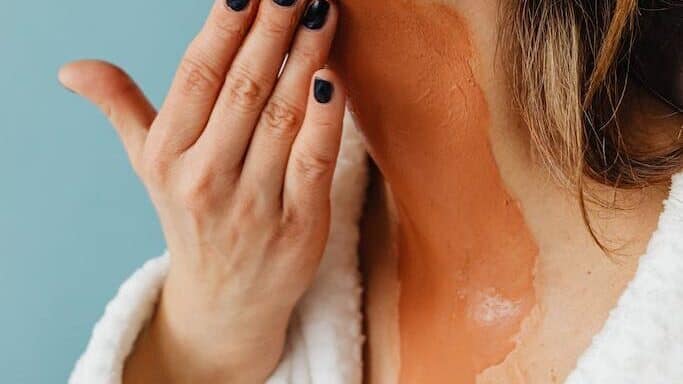
Selecting the correct shade of foundation and concealer is crucial in makeup application, especially when trying to conceal acne scars. A shade that is too light or too dark can create a contrast with your natural skin tone, drawing attention to the areas you want to conceal.
The wrong shade can also emphasize the texture and edges of scars, making them more visible. It’s important to test foundation shades in natural lighting and consider how colors might change as the makeup oxidizes on your skin. A well-matched shade will blend seamlessly with your skin, providing a natural cover for scars without highlighting them.
3. Dry Formula
Dry or matte formulas, particularly powder-based makeup, can be problematic for acne-scarred skin. These products can cling to dry patches and settle into the indentations of scars, emphasizing their texture. Dry formulas can absorb the natural oils of the skin, making the surface appear flaky and uneven. For acne-scarred skin, it’s often better to opt for liquid or cream-based products that hydrate the skin and offer a smoother finish. These products glide over scars instead of settling into them, helping to create a more even skin texture.
4. Lack Of Primer

Milk Makeup Hydro Grip Primer
Primer acts as a smoothing base for makeup, filling in fine lines and shallow scars, which creates a more even surface for foundation application. Skipping this step can result in makeup settling directly into scars and pores, making them more pronounced.
A good primer, especially one targeted for filling in texture, can significantly improve the appearance of acne scars under makeup. It also helps makeup to adhere better to the skin, allowing for a longer-lasting, smoother finish.
5. illuminating Products
Highlighters and products with shimmer or glitter can draw attention to the texture of the skin, including acne scars. When light reflects off these products, it can accentuate raised scars and create shadows in indented scars. For acne-scarred skin, it’s advisable to use matte products or place illuminating products strategically, avoiding areas with pronounced scarring
6. Not Setting Makeup
Setting makeup with a powder helps to keep it in place and prevent it from creasing or settling into scars as the day progresses. Skipping this step can lead to makeup migration, where the product accumulates in scarred areas, highlighting them. A light, translucent setting powder can be used to set makeup gently without adding texture to the skin.
7. Skipping Moisturizer
Moisturizing preps the skin for makeup application, providing a hydrated, smooth base. Dry skin can cause makeup to flake or settle into scars, accentuating them. A well-moisturized face allows makeup to blend more easily and evenly, reducing the emphasis on scars.
Be Aware Of Makeup Ingredients and Acne Scars
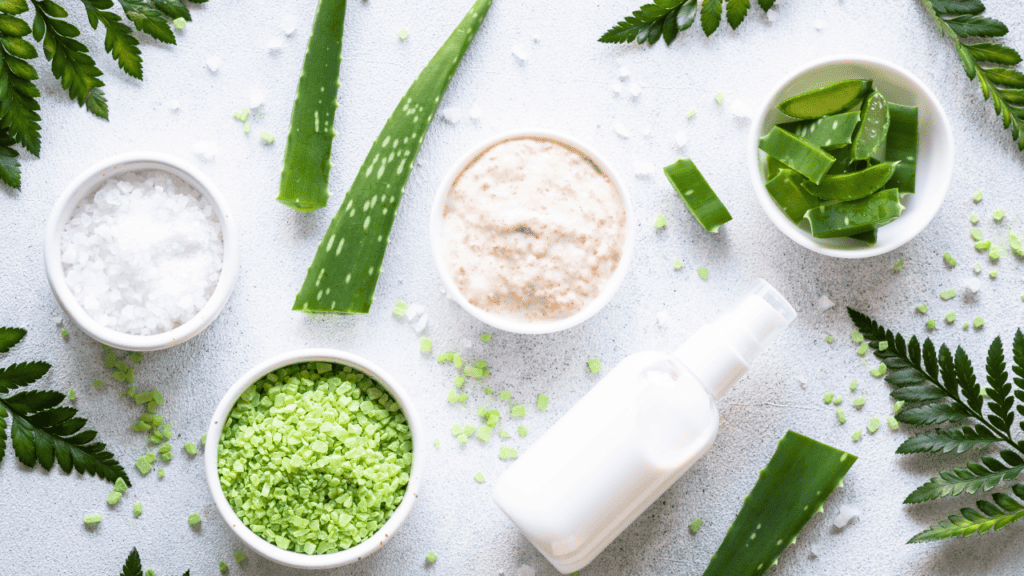
When dealing with acne scars, the ingredients in your makeup matter just as much as the application. Certain ingredients can not only make scars look worse but also potentially worsen your skin’s condition.
Comedogenic Ingredients
“Comedogenic” refers to ingredients in makeup and skincare products that can clog pores, leading to acne and potentially worsening existing scars. This is why acne scars may look worse at night, after a full day of makeup on.
Common comedogenic ingredients include certain oils, silicones, and alcohols. When pores are clogged, this can lead to a bumpy texture and inflamed skin, which can further accentuate the appearance of acne scars.
5 common comedogenic ingredients in makeup:
- Isopropyl Myristate: Commonly used as a thickening agent or emollient in makeup, Isopropyl Myristate can easily clog pores, especially in individuals with oily or acne-prone skin.
- Lanolin: While lanolin (wool grease) is an effective moisturizer, it’s known to be comedogenic. It’s often found in creamier makeup products like certain foundations and cream blushes.
- Laureth-4: This is a type of surfactant and emulsifier often used in creamy or liquid makeup formulations. Laureth-4 is known for its pore-clogging properties and can contribute to acne flare-ups.
- Algae Extract: Used for its hydrating and antioxidant properties in various cosmetic products, algae extract can be comedogenic for some skin types, leading to blocked pores.
- Cocoa Butter: Widely used for its moisturizing properties, cocoa butter is a heavy ingredient and can be highly comedogenic. It’s often found in thicker makeup products like stick foundations and cream-based makeup.
It’s important to read the ingredient lists on makeup products and avoid those with high levels of comedogenic substances. Look for products labeled “non-comedogenic,” as these are formulated to minimize the likelihood of clogging pores. Additionally, incorporating a regular skin-cleansing routine can help keep your pores clear and reduce the chances of makeup-induced acne flare-ups.
Alternatives and Solutions

While makeup can sometimes exacerbate the appearance of acne scars, there are effective alternatives and solutions. These approaches focus on both selecting the right makeup products and adopting a skincare routine that nurtures scarred skin.
Choosing the Right Makeup Products
The key to concealing acne scars effectively is choosing makeup products that cater to your skin’s needs. Lightweight, non-comedogenic makeup is essential. Look for products labeled as such, as they are designed not to clog pores. Additionally, consider the following tips:
- Foundation: Opt for a foundation with a matte finish and buildable coverage. This can help in creating an even skin tone without adding too much texture.
- Concealer: A high-coverage, yet lightweight concealer can be applied directly onto scars to minimize their appearance.
- Setting Powder: A fine, translucent setting powder can help set your makeup without adding weight or texture.
- Application Tools: Use clean brushes or sponges for application. These tools can help blend the makeup seamlessly, avoiding the accumulation of product on scarred areas.
Remember, less is often more. Applying makeup in thin layers and building up coverage gradually can prevent a heavy, cakey look that highlights scars.
Skincare for Acne-Scarred Skin
A dedicated skincare routine is equally important in managing the appearance of acne scars. This routine should focus on hydration, gentle exfoliation, and protection:
- Hydration: Moisturized skin can help reduce the appearance of scars and improve overall skin texture. Look for non-comedogenic moisturizers.
- Gentle Exfoliation: Products with AHAs or BHAs can help in the gentle exfoliation of the skin, promoting cell turnover and reducing scar visibility over time.
- Sun Protection: Always use a broad-spectrum sunscreen. Sun exposure can darken scars, making them more noticeable.
- Scar Treatments: Consider products with ingredients known to help in scar healing, like vitamin C, retinol, and niacinamide.
Professional Makeup Techniques for Acne Scars

Professional makeup artists have techniques specifically for concealing acne scars effectively. These techniques, when used correctly, can significantly minimize the appearance of scars.
Techniques Used by Makeup Artists
Professional makeup artists often use a technique called “layering” to conceal scars. This involves:
- Priming: Applying a primer to create a smooth base.
- Color Correcting: Using color-correcting concealers to neutralize discoloration before applying foundation.
- Light Layering: Applying foundation in thin layers, building up coverage only where needed.
- Spot Concealing: Using a high-coverage concealer precisely on the scars.
- Setting Gently: Using a light touch to apply setting powder, preventing makeup from settling into scars.
These techniques focus on creating an even skin tone and texture without adding excess product.
Recommendations for Professional Consultation
If you’re struggling to conceal acne scars effectively, consider consulting a professional makeup artist. They can provide personalized advice and demonstrate techniques suited to your specific skin type and scar pattern. This consultation can be a valuable learning experience, helping you understand how to use makeup to your advantage while taking care of your skin.
Conclusion
Most importantly, it’s about cultivating a positive relationship with your skin. Each scar tells a story, and while makeup can help us present our best face to the world, true beauty radiates from confidence and self-acceptance. Embrace your journey with makeup and skincare as a form of self-care and expression, and let your unique beauty shine through.
FAQs
Why does makeup sometimes make acne scars look more noticeable?
Makeup can highlight acne scars due to shadowing effects and texture differences on the skin’s surface.
What type of makeup should I use for acne scars?
Opt for non-comedogenic, lightweight makeup with buildable coverage to minimize the appearance of scars.
How can I prevent makeup from worsening my acne scars?
Use non-comedogenic products, apply makeup in thin layers, and maintain a consistent skincare routine.
